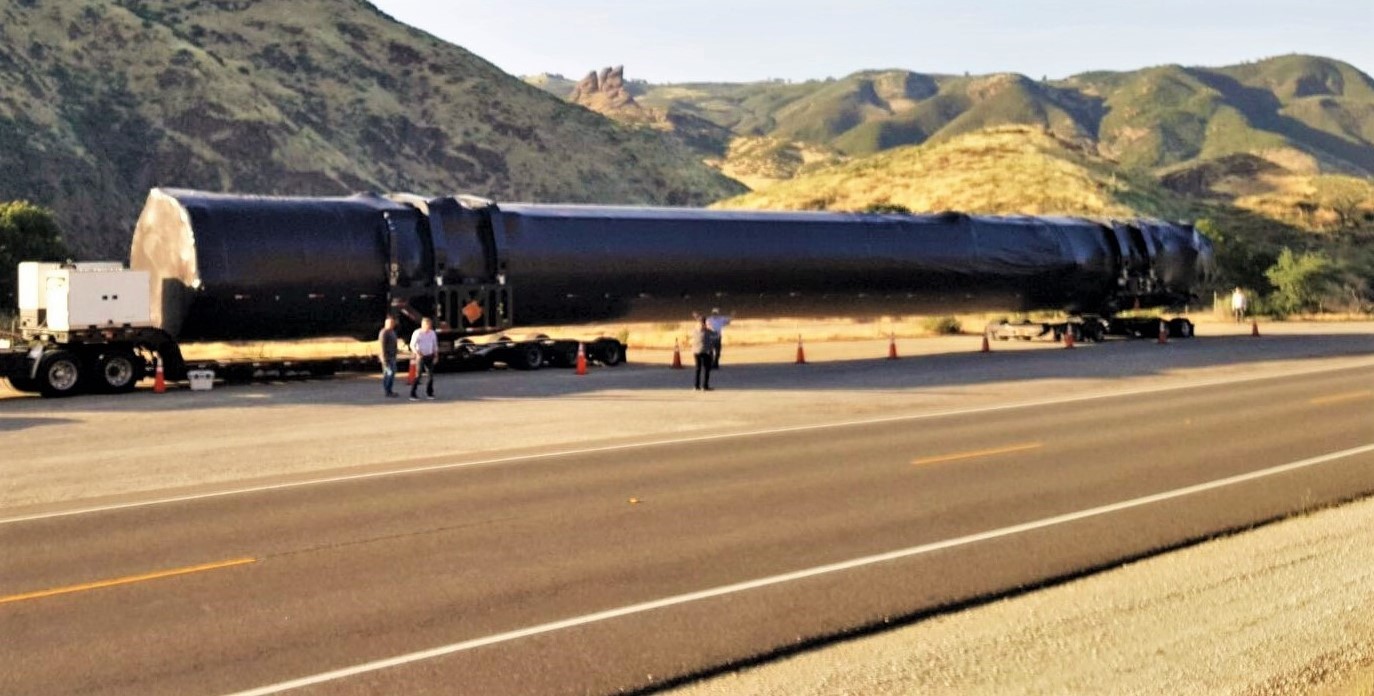

News
SpaceX Falcon 9 booster spotted in Southern California on journey to Florida
On August 20th, a member of a local California Facebook group happened to spot a SpaceX Falcon 9 booster in transit, an exceedingly rare sight as of late. Moving east, the booster is almost certainly heading to Florida to support a major cluster of 6-8 launches in Q4 2019.
This marks the first time in nearly four months that a flight-proven Falcon 9 booster has been spotted in transit, excluding a lone (unflown) booster captured on its way to McGregor, Texas last month. This also serves as an opportunity to reexamine the status of SpaceX’s expansive fleet of reusable Falcon 9 Block 5 rockets as the company prepares for a busy end of 2019 in the midst of a rare multi-month lull in launch activities.
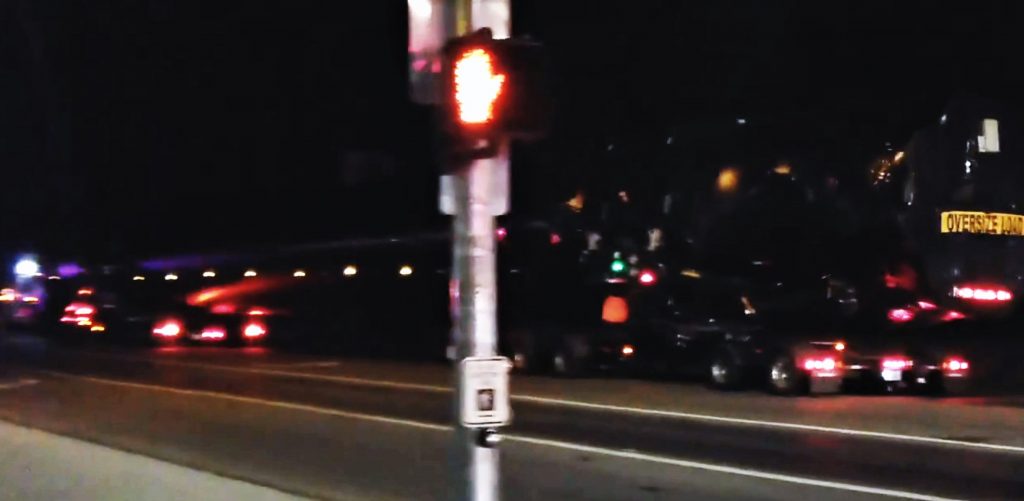
Based on the timing, its location (Southern California), and the direction it was headed (Eastbound), the rocket spotted on August 20th is almost certainly twice-flown Falcon 9 booster B1051. The booster was likely departing SpaceX’s Vandenberg Air Force Base (VAFB) launch facilities after some two months post-launch inspections and refurbishment, having completed its second launch and landing on June 12th, 2019 in support of the Radarsat Constellation Mission (RCM).
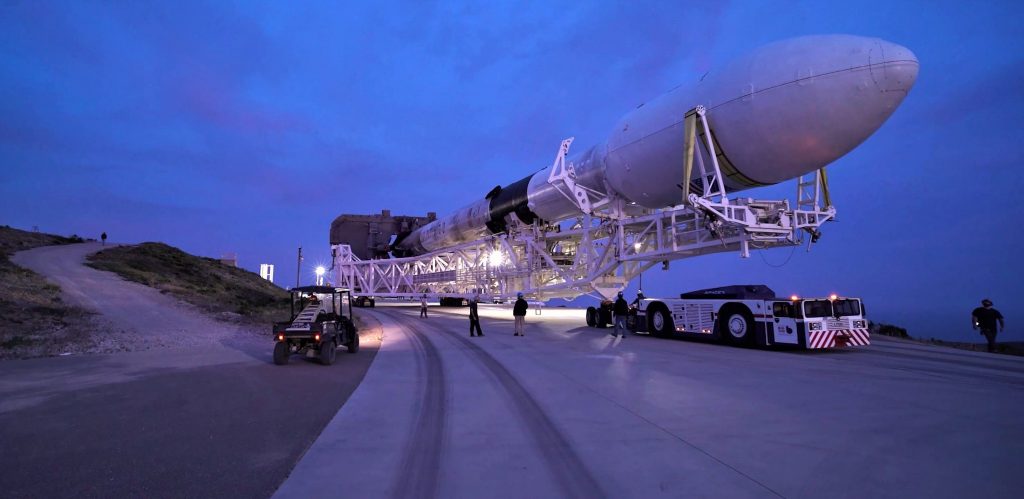
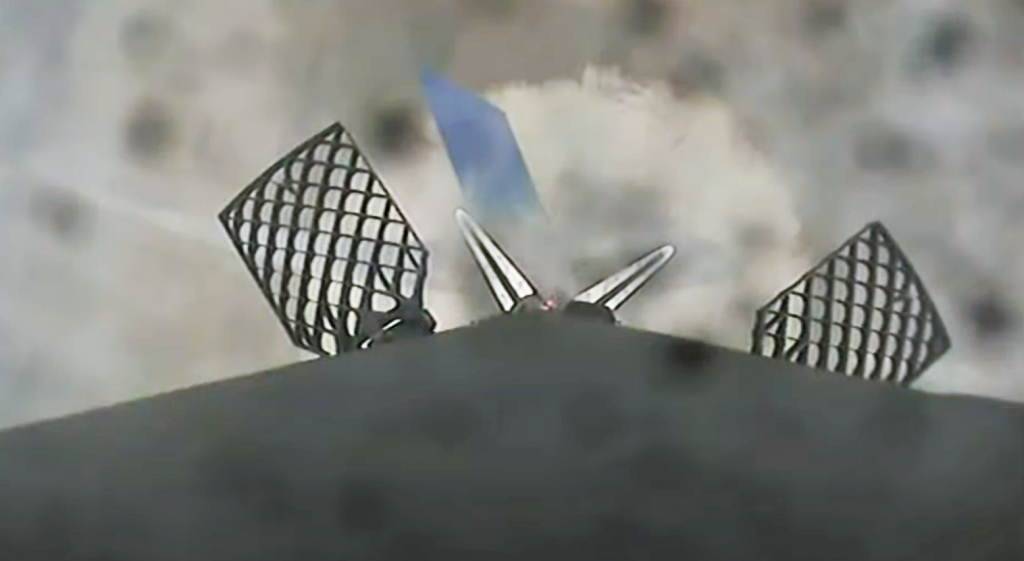
Prior to its successful launch of RCM, B1051 had the historic privilege of supporting the inaugural orbital launch of SpaceX’s Crew Dragon spacecraft, putting the next-gen crew capsule through its paces before a crewed launch debut expected to occur absolutely no earlier than (NET) December 2019. Known as DM-1 (Demo-1), B1051 was subjected to an exceptionally strenuous suite of inspections, analysis, and testing for the mission – from the very first welding sparks to the booster’s McGregor, TX and Florida static fires and launch debut.
Said debut occurred on March 2nd, 2019, after which B1051 landed at sea aboard drone ship Of Course I Still Love You (OCISLY).
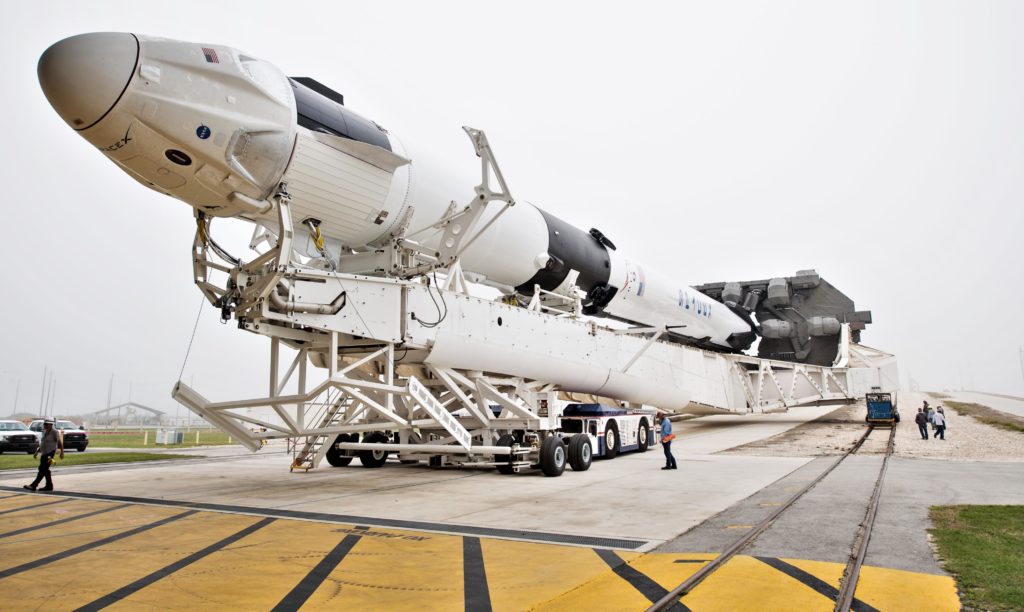
SpaceX production experienced an exceptionally frenetic period from early-2018 to mid-2019, in which the company averaged the completion of almost an entire Falcon 9 or Heavy rocket every 1-2 months, building, delivering, launching, and relaunching Falcon boosters B1046 through B1057 from ~January 2018 to April 2019. In the last 3-4 months, the (publicly visible) rate of rocket production has dramatically slowed, presumably an intentional slow-down triggered by SpaceX’s rapidly growing fleet of flight-proven boosters.
In the last four or so months, unaffiliated observers have spotted a grand total of one new Falcon 9 booster on its way from SpaceX’s Hawthorne, CA factory to its McGregor, TX testing facilities. That booster – likely either B1058 for Crew Dragon’s crewed launch debut (Demo-2) or B1059 for SpaceX’s next USAF GPS III launch – was spotted twice headed east in Arizona on July 29th. Prior to that, the next most recent ‘core spottings’ occurred in mid-to-late April, while the most recent since July 29th’s instance is B1051.2’s August 20th appearance. In short, things are unusually quiet on the SpaceX booster transport front.
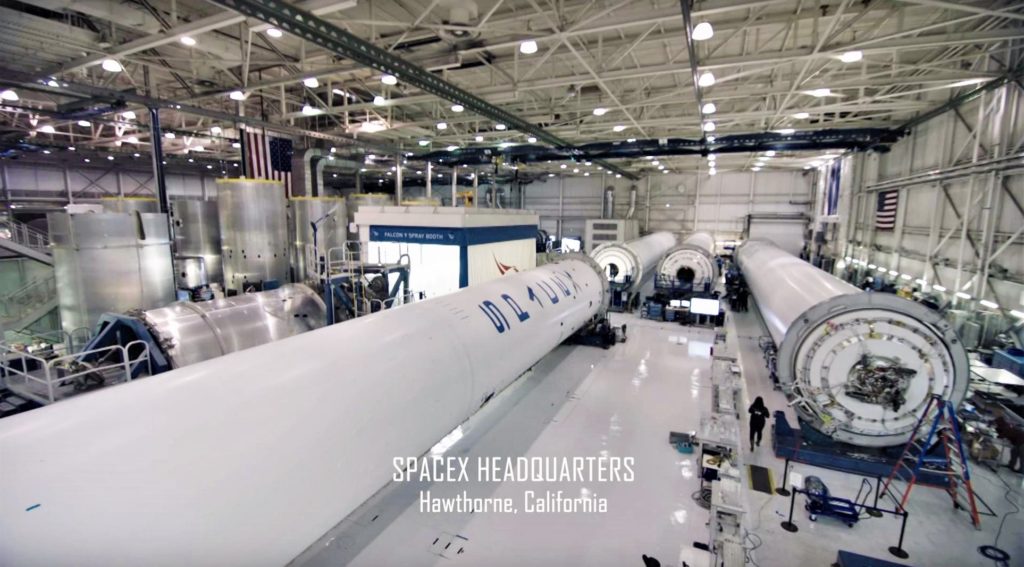
Rocket fleet logistics
This apparent slowdown in production can be relatively easily explained by the nature of SpaceX’s fleet of boosters, as well as the company’s growing confidence in the extreme reusability nominally permitted by Falcon 9’s Block 5 upgrade. Just a few days ago, SpaceX Vice President of Build and Flight Reliability Hans Koenigsmann reiterated the belief that Falcon 9 Block 5 boosters will be more than capable of safely performing 10 or more launches apiece.
At the moment, SpaceX’s fleet of flightworthy Block 5 boosters is seven strong, composed of B1046.3, B1048.3, B1049.3, B1051.2, B1052.2, B1053.2, B1056.2. Altogether, they have supported a full 17 launches in 15 months, averaging 2.4 launches apiece with a maximum of three launches achieved by three separate boosters. Under the extremely conservative assumption that 60-90 days are needed for post-flight inspections and refurbishment, anywhere from 2-6 of those boosters are already ready for their next launches.
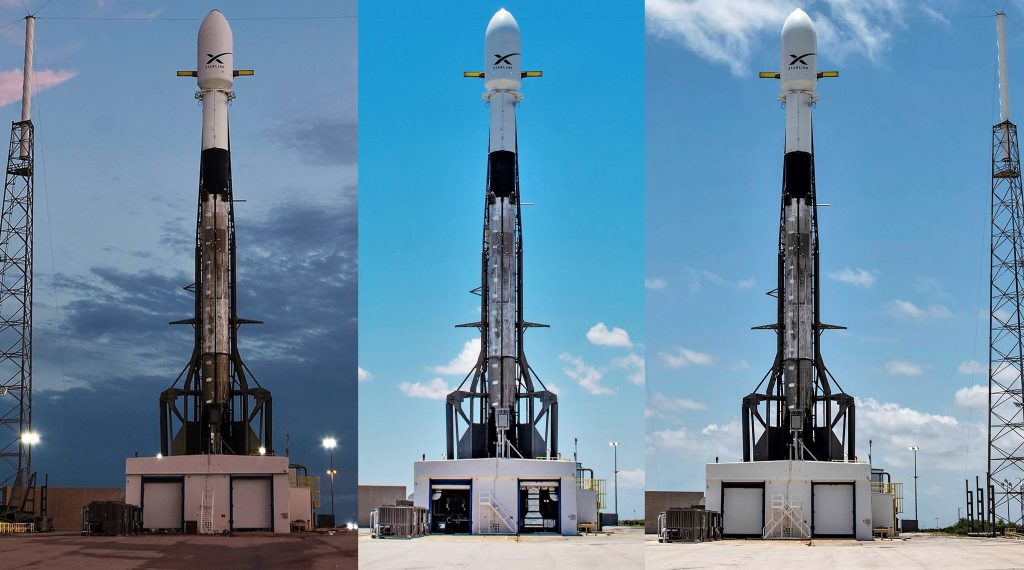
In simple terms, it appears that even a fleet as small as seven Falcon 9 Block 5 boosters may be capable of supporting a vast majority of SpaceX’s commercial launch contracts, while even NASA has come to support launching uncrewed Cargo Dragon missions on flight-proven boosters. In fact, Koenigsmann revealed that a number of customers had nearly come a full 180 degrees in the less than three years that SpaceX has been reflying boosters. Many now actively prefer a flight-proven booster and have come to view them as a more known quantity relative to unproven (i.e. new) hardware.
Aside from a handful of customers – primarily the US military – that explicitly demand new hardware, the rare need for entirely expendable Falcon 9 launches, and the equally rare loss of boosters during unsuccessful landings, SpaceX just doesn’t need nearly as high of a Falcon 9 or Heavy booster production rate to support the same (or even greater) launch cadences.
Check out Teslarati’s Marketplace! We offer Tesla accessories, including for the Tesla Cybertruck and Tesla Model 3.
News
SpaceX’s Crew-11 mission targets July 31 launch amid tight ISS schedule
The flight will lift off from Launch Complex 39A at Kennedy Space Center in Florida.

NASA and SpaceX are targeting July 31 for the launch of Crew-11, the next crewed mission to the International Space Station (ISS). The flight will lift off from Launch Complex 39A at Kennedy Space Center in Florida, using the Crew Dragon Endeavour and a Falcon 9 booster.
Crew Dragon Endeavour returns
Crew-11 will be the sixth flight for Endeavour, making it SpaceX’s most experienced crew vehicle to date. According to SpaceX’s director of Dragon mission management, Sarah Walker, Endeavour has already carried 18 astronauts representing eight countries since its first mission with NASA’s Bob Behnken and Doug Hurley in 2020, as noted in an MSN report.
“This Dragon spacecraft has successfully flown 18 crew members representing eight countries to space already, starting with (NASA astronauts) Bob (Behnken) and Doug (Hurley) in 2020, when it returned human spaceflight capabilities to the United States for the first time since the shuttle retired in July of 2011,” Walker said.
For this mission, Endeavour will debut SpaceX’s upgraded drogue 3.1 parachutes, designed to further enhance reentry safety. The parachutes are part of SpaceX’s ongoing improvements to its human-rated spacecraft, and Crew-11 will serve as their first operational test.
The Falcon 9 booster supporting this launch is core B1094, which has launched in two previous Starlink missions, as well as the private Ax-4 mission on June 25, as noted in a Space.com report.
The four-members of Crew-11 are NASA astronauts Zena Cardman and Mike Fincke, as well as Japan’s Kimiya Yui and Russia’s Oleg Platonov.
Tight launch timing
Crew-11 is slated to arrive at the ISS just as NASA coordinates a sequence of missions, including the departure of Crew-10 and the arrival of SpaceX’s CRS-33 mission. NASA’s Bill Spetch emphasized the need for careful planning amid limited launch resources, noting the importance of maintaining station altitude and resupply cadence.
“Providing multiple methods for us to maintain the station altitude is critically important as we continue to operate and get the most use out of our limited launch resources that we do have. We’re really looking forward to demonstrating that capability with (CRS-33) showing up after we get through the Crew-11 and Crew-10 handover,” Spetch stated.
Lifestyle
EV fans urge Tesla to acquire Unplugged Performance for edge in fleet and security industry
Unplugged Performance has built a name for itself by producing performance upgrades for Tesla vehicles.

A growing number of Tesla enthusiasts and longtime community voices are calling on the electric vehicle maker to acquire Unplugged Performance, a California-based aftermarket company best known for tuning Tesla vehicles and developing specialized government fleet solutions under its UP.FIT division.
The idea was once considered a niche proposal among EV fans, but it is now gaining serious attention not just as a performance play but as a strategic move to deepen Tesla’s roots in the fleet and security industry.
A strategic fit
Unplugged Performance has built a name for itself by producing performance upgrades for Tesla vehicles, from track-optimized components to visual and aerodynamic upgrades. But in recent years, its UP.FIT division has pivoted toward a more functional future by outfitting Tesla vehicles like Model Ys for police, military, and government use.
That work has sparked growing calls for closer collaboration with Tesla, especially as the EV maker increasingly leans into autonomy, AI, and fleet services as core components of its next chapter.
“I posted this four years ago, but I think it’s more true now than ever,” wrote Whole Mars Catalog, a well-known Tesla investor and FSD Beta tester, on X. “Tesla should buy Unplugged. But not just as a Performance division. What they are doing with UP.FIT unlocks large government and commercial fleet purchases that can improve utilization.”
Tesla fans such as shareholder Sawyer Merritt echoed the sentiment, calling Unplugged a “great fit within Tesla.” adding, “They are literally located directly next to Tesla’s design studio in Hawthorne.”
Enabling the next wave
Supporters of the idea noted that integrating Unplugged into Tesla’s corporate structure could help accelerate the adoption of autonomous technologies in government sectors. With UP.FIT patrol cars already in use across some U.S. police departments, Tesla fans envisioned a future where self-driving Teslas could potentially revolutionize law enforcement, search-and-rescue, and public service logistics.
“Just imagine how autonomous patrol cars could transform policing and bring us into a safer future,” the veteran FSD tester wrote.
The benefits could also extend to Tesla’s existing consumer base. “They also have some incredible products in the works that I think will appeal to many ordinary Tesla drivers — not just those looking for performance or mods. Stuff that’s so good it should have come straight from the design studio next door,” Whole Mars Catalog noted.
Unplugged Performance, founded in 2013, shares not just a product vision with Tesla, but also geography. Its Hawthorne headquarters sits directly adjacent to Tesla’s design studio, and the two companies have maintained a close working relationship over the years. The aftermarket firm has long positioned itself as a “mission-aligned” partner to Tesla.
In response to the recent calls for acquisition, Unplugged Performance acknowledged the support from the community. “Our very existence is to support the Tesla mission with @UpfitTesla and @UnpluggedTesla,” Unplugged CEO Ben Schaffer posted on X. “We love working with Tesla and are grateful for the community’s support since 2013!”
News
Tesla debuts hands-free Grok AI with update 2025.26: What you need to know
All new Tesla vehicles delivered on or after July 12, 2025, will include Grok AI out of the box

Tesla has begun rolling out Grok, an in-car conversational AI assistant developed by xAI, to eligible vehicles starting July 12. The feature marks the most direct integration yet between Elon Musk’s artificial intelligence startup and Tesla’s consumer product lineup, offering drivers hands-free access to a chat-style companion while on the road.
Grok comes pre-installed on new vehicles
According to Tesla’s FAQ page for the feature, all new vehicles delivered on or after July 12, 2025, will include Grok AI out of the box. Owners of older vehicles may gain access through an over-the-air update, provided their vehicle meets a few hardware and software requirements.
Specifically, Grok is currently only supported on Tesla models equipped with an AMD infotainment processor and running vehicle software version 2025.26 and higher. Compatible models include the Model S, Model 3, Model X, Model Y, and Cybertruck. A Premium Connectivity subscription or active Wi-Fi connection is also required.
Tesla notes that additional vehicle compatibility may arrive in future software updates.
Grok’s features and limitations for now
Drivers can engage with Grok using the App Launcher or by pressing and holding the voice command button on the steering wheel. Grok is designed to answer questions and hold conversations using natural language, offering responses tailored to its chosen personality—ranging from “Storyteller” to the more eccentric “Unhinged.”
For fun, Tesla posted a demonstration of Grok likely running on “Unhinged” talking about what it would do to Optimus when they are on a date, much to the shock of the humanoid robot’s official social media account.
It should be noted, however, that Grok cannot currently issue commands to the vehicle itself, at least for now. Traditional voice commands for tasks like climate control, navigation, or media remain separate from Grok as of writing.
The feature is being released in Beta and does not require a Grok account or xAI subscription to activate, although that policy may change over time.
Grok privacy and in-car experience
Tesla emphasizes that interactions with Grok are securely processed by xAI and not linked to a user’s Tesla account or vehicle. Conversations remain anonymous unless a user signs into Grok separately to sync their history across devices.
Tesla has also begun promoting Grok directly on its official vehicle webpages, showcasing the feature as part of its in-car experience, further highlighting the company’s increasing focus on AI and infotainment features on its all-electric vehicles.
-

 Elon Musk2 weeks ago
Elon Musk2 weeks agoTesla investors will be shocked by Jim Cramer’s latest assessment
-

 Elon Musk3 days ago
Elon Musk3 days agoxAI launches Grok 4 with new $300/month SuperGrok Heavy subscription
-

 Elon Musk5 days ago
Elon Musk5 days agoElon Musk confirms Grok 4 launch on July 9 with livestream event
-

 News1 week ago
News1 week agoTesla Model 3 ranks as the safest new car in Europe for 2025, per Euro NCAP tests
-

 Elon Musk1 week ago
Elon Musk1 week agoxAI’s Memphis data center receives air permit despite community criticism
-

 News2 weeks ago
News2 weeks agoXiaomi CEO congratulates Tesla on first FSD delivery: “We have to continue learning!”
-

 Elon Musk2 weeks ago
Elon Musk2 weeks agoTesla scrambles after Musk sidekick exit, CEO takes over sales
-

 News2 weeks ago
News2 weeks agoTesla sees explosive sales growth in UK, Spain, and Netherlands in June
















